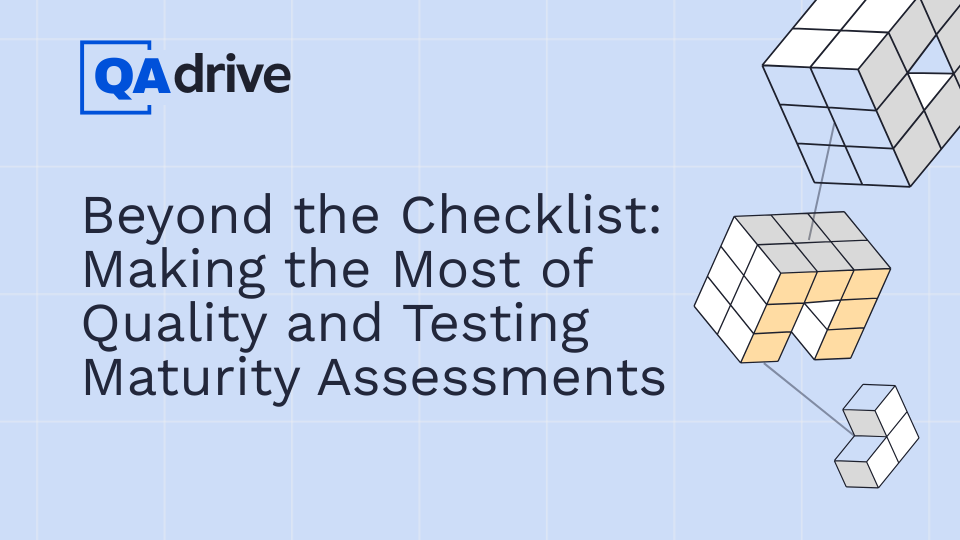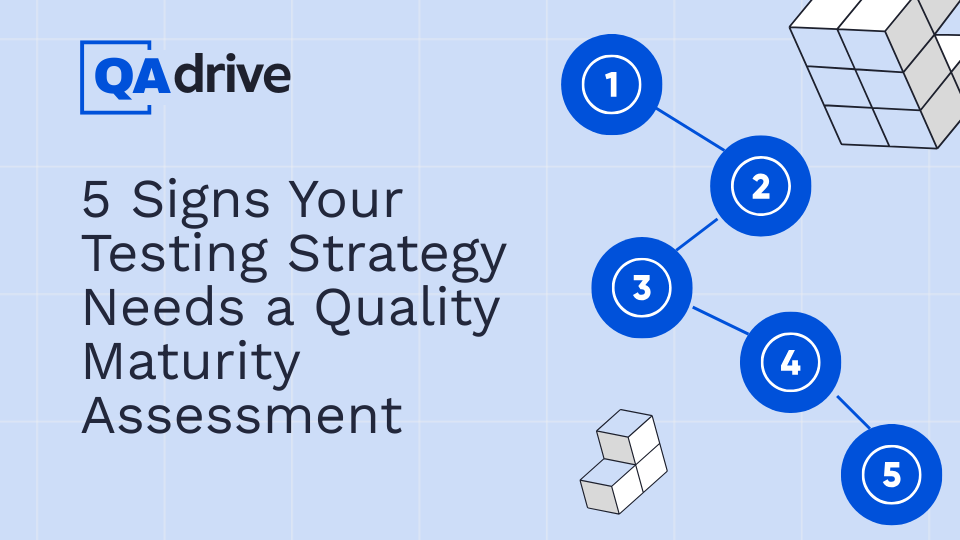A quality maturity assessment gives you more than a snapshot. It provides clear, prioritized recommendations tailored to your team’s context. But even with a strong starting point, how you act on the results sets the course for meaningful transformation.
In this post, we explore four key recommendations to help teams get the most from a quality maturity assessment’s results.
1. Start With a Shared Understanding of the Quality Maturity Assessment Results
It’s tempting to skim the results of a quality maturity assessment and move straight into fixing mode. But lasting improvement begins with something more thoughtful and foundational: shared understanding.
Instead of treating the report as a checklist or a management summary, involve your team in reflecting on the findings together. This process often takes more than one conversation. People need time to process what they’ve read, ask questions, and connect the results to their day-to-day experiences. It’s enriching to facilitate conversations across roles, including testers, developers, product leads, product owners, UX designers, and managers. Ask what stood out in the results. Which observations felt accurate? Which ones didn’t? What raised questions or sparked curiosity?
These conversations help build alignment; not just around what the report says but around what it means for your team’s context. Agreement on next steps can come later. This stage is about creating shared insight and a common frame of reference that everyone can work from.
2. Review the Prioritized Recommendations Strategically
Once your team has a shared understanding of the results, it’s time to shift the conversation from what the findings mean to what to do with them. This is where the structure of the quality maturity assessment becomes especially useful.
A good assessment includes recommendations that are already organized by area and prioritized as a starting point. But that doesn’t mean every high-priority item needs to be addressed right away. A strategic review means stepping back to see the bigger picture and making decisions based not just on urgency, but also on what will be most impactful in the short, mid, and long term.
The goal here isn’t to create the perfect plan. It’s to begin sequencing improvements in a way that is both intentional and sustainable, so your team isn’t overwhelmed or burned out before change even begins.
3. Decide How to Develop the Needed Skills
As you begin mapping out what to act on, it’s also worth asking a practical question: do we have the skills and capacity to support these changes?
Many recommendations, especially those that help teams grow in maturity, depend on a mix of technical and interpersonal skills. And those skills aren’t always available in-house. That’s not a weakness. It’s something to recognize early so you can make thoughtful, realistic decisions.
Collaborative and leadership skills are essential to making improvement efforts work. They shape how people work together, communicate, and drive change across roles. These are core skills, not afterthoughts, and they support every other change you hope to make.
For each recommendation you plan to prioritize, consider whether the necessary capabilities and skills already exist on your team, or whether they need to be developed, hired, or temporarily brought in. Sometimes it makes sense to invest in growing those skills internally through mentoring, pair work, or structured learning. Other times, it may be more effective to bring in someone with specific experience or to work with external experts for a limited time.
There is no single right answer. The best path forward depends on your context, including factors such as budget, timelines, or organizational priorities.
Being honest about your team’s strengths, gaps, and working context does not slow things down. It creates the conditions for meaningful and sustainable improvement.
4. Create a Roadmap for Action
Once your team has clarity on priorities and needs, the next step is to build an action plan. This does not have to be a detailed project plan. A shared guide that helps the team take action and stay aligned can serve as a compass.
Use your existing team ceremonies like retrospectives, sprint planning, or PI planning to revisit priorities and check in on progress. These regular moments are useful for keeping the roadmap visible without adding extra overhead. You might also introduce dedicated sessions or workshops at the beginning, or as needed, to help the team focus on specific changes. Just make sure to revisit and remove them once the related skills or practices have been adopted.
For each prioritized recommendation, define ownership, timelines, and review points. Make it clear who is leading the work and when the team will pause to reflect or adjust.
Many teams find it helpful to tie each change to a broader goal, and be specific about how progress will be tracked. Whether the focus is on improving quality outcomes, strengthening collaboration, or making delivery more predictable, ensure the work aligns with your team’s overall direction.
As you build the plan, consider how recommendations will unfold across short-, mid-, and long-term horizons. Aim for a balanced flow of work that fits your context. Make space for developing new skills, bringing in additional team members, or partnering with external experts. The plan should reflect your team’s capacity, not just the ambition behind the recommendations.
A good roadmap turns strategy into action and gives the team a way to learn and adjust over time. Make time to revisit it regularly and adapt it as improvements become part of your team’s culture.

